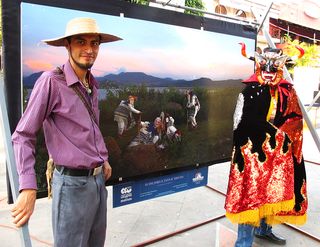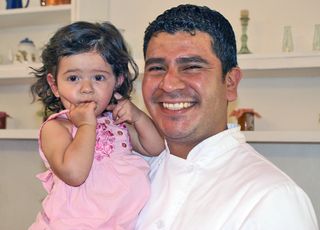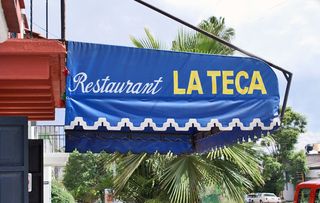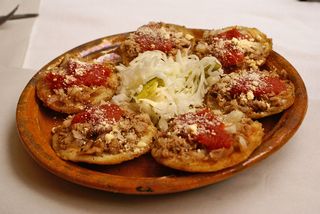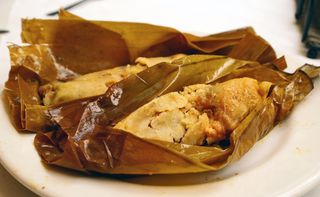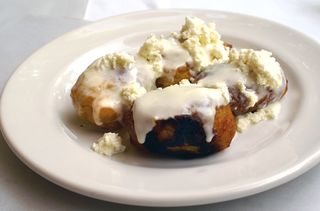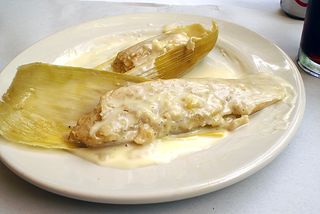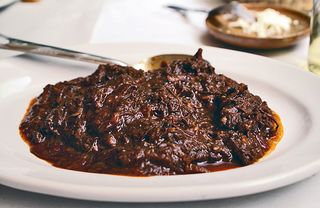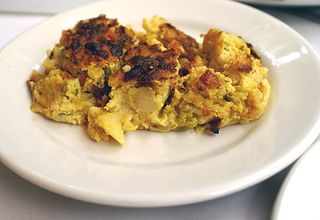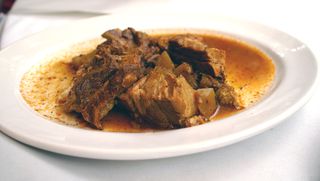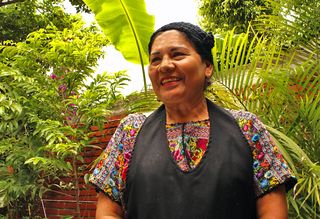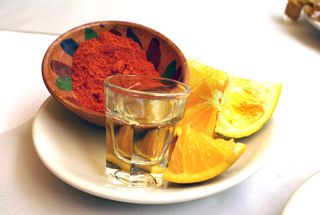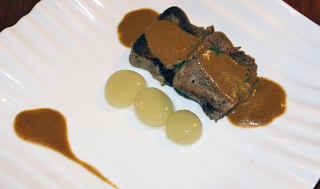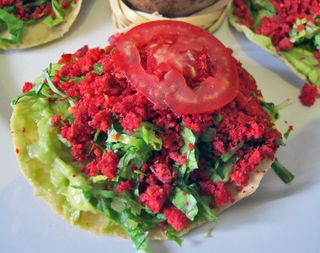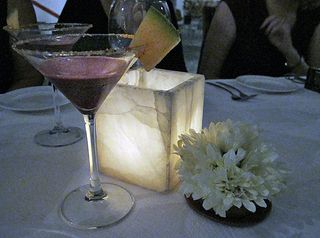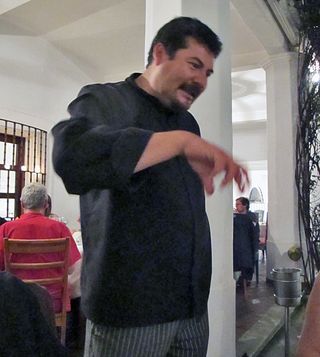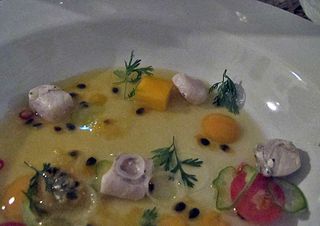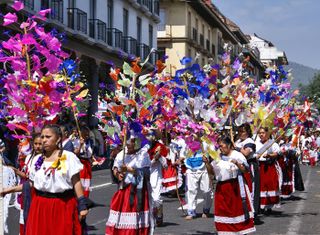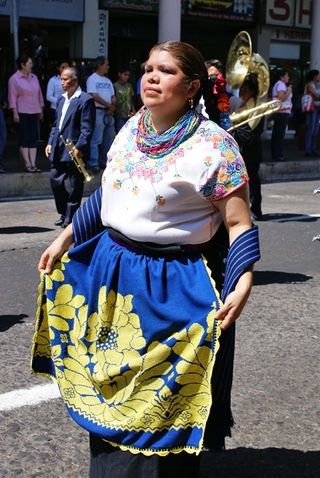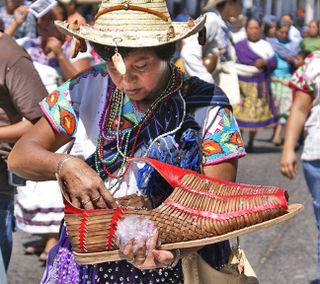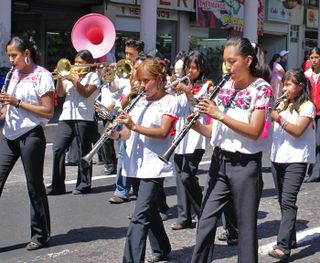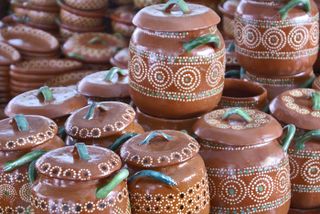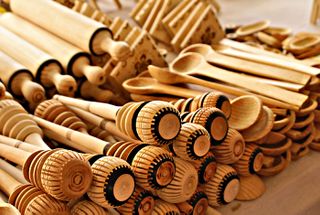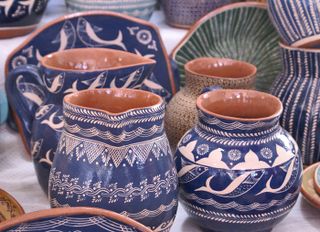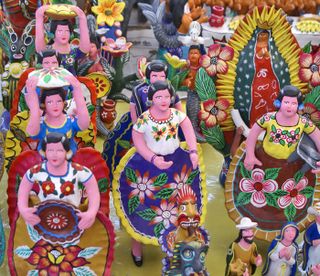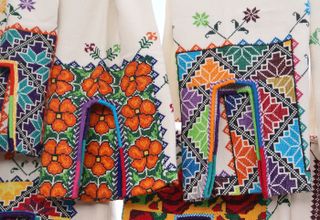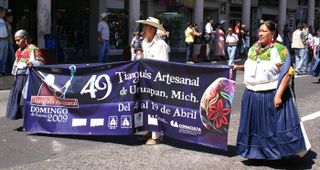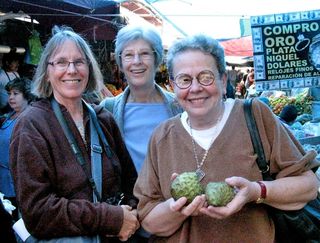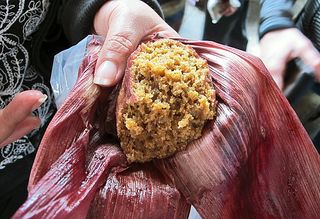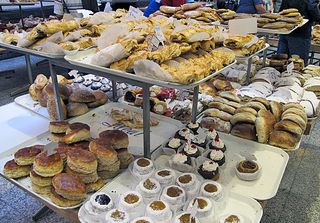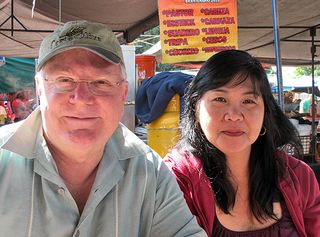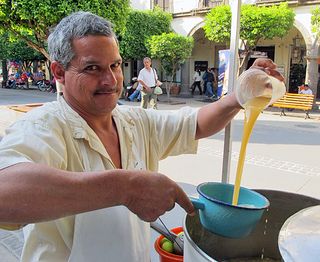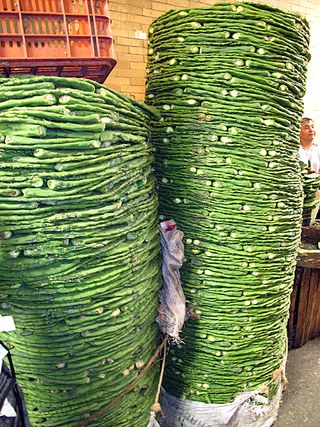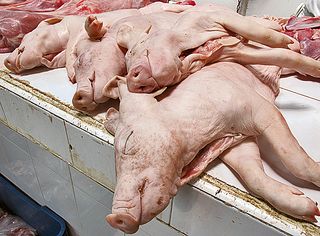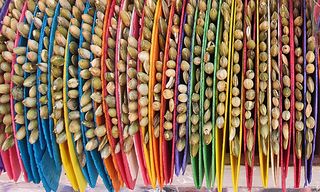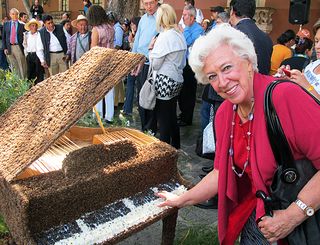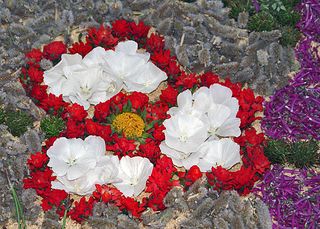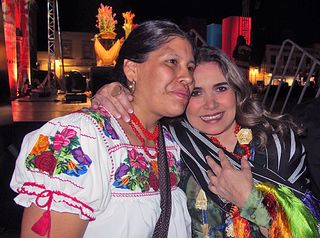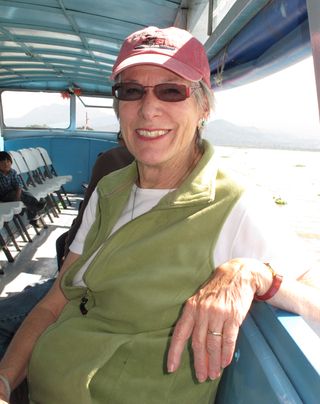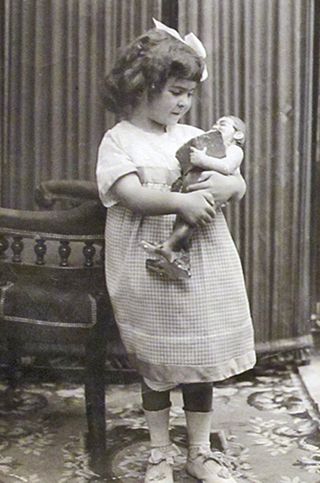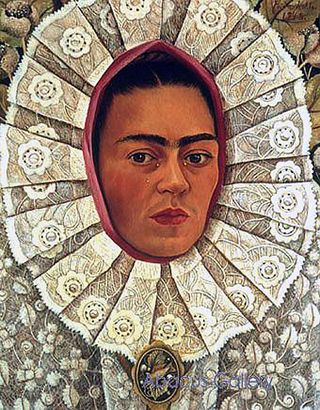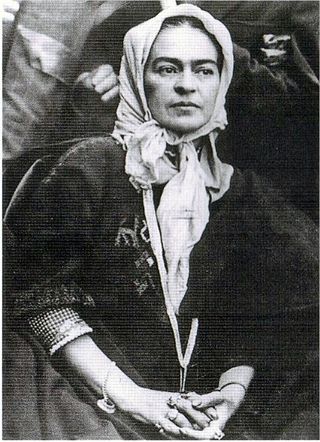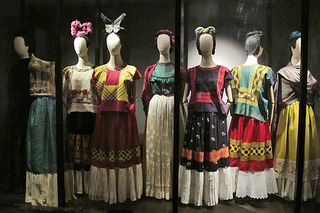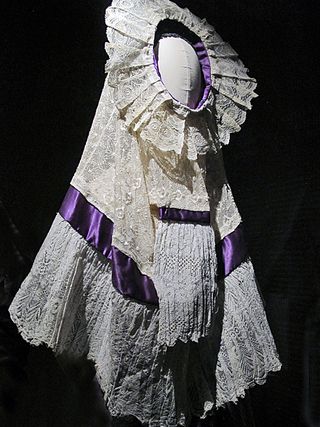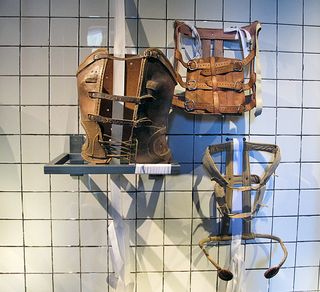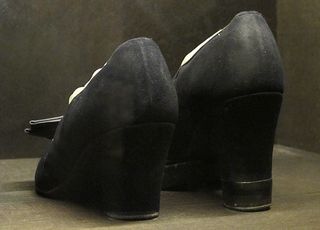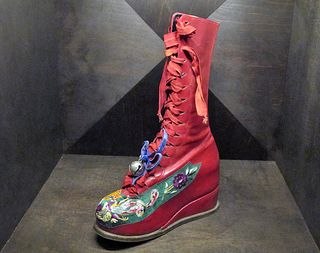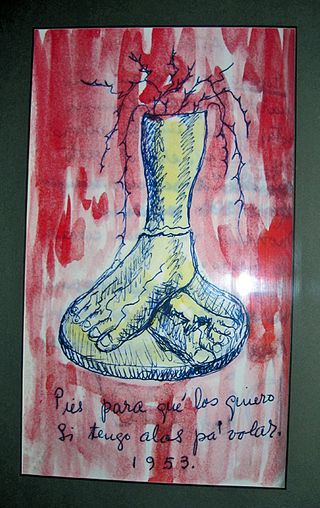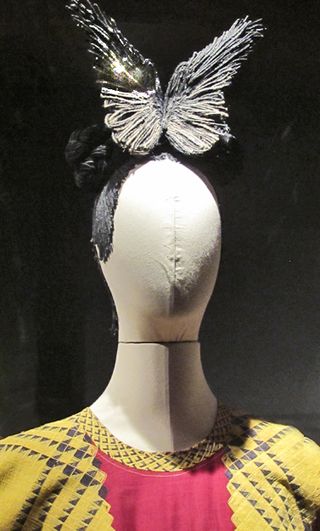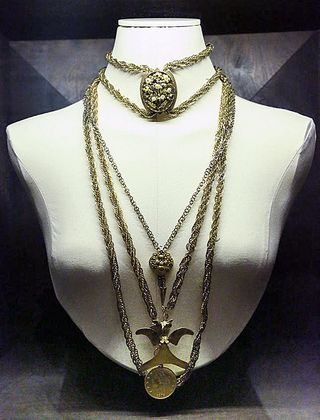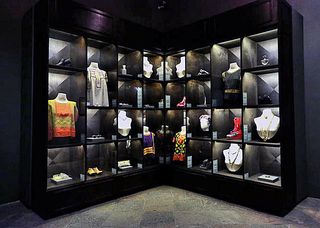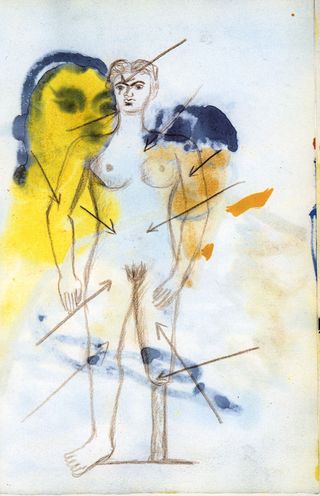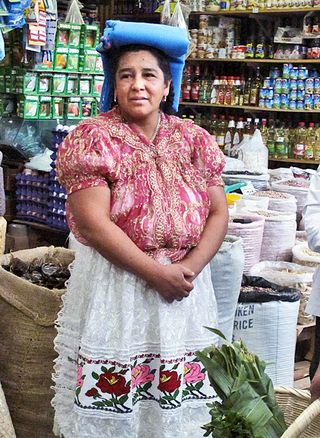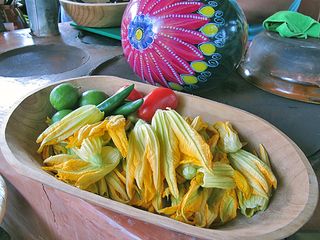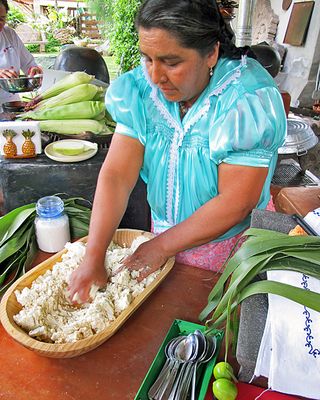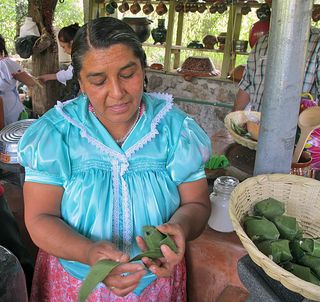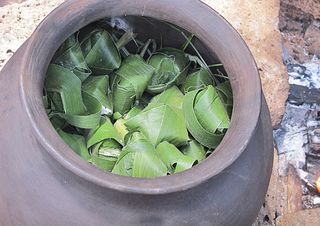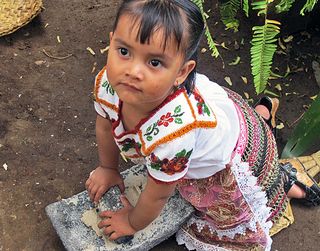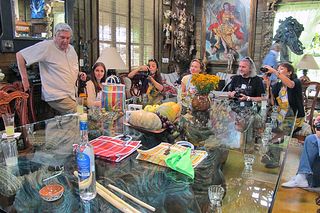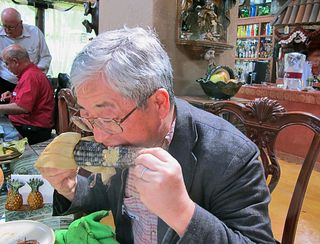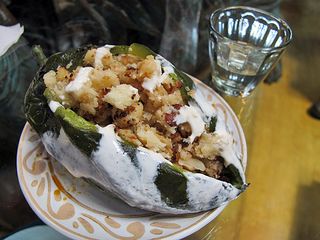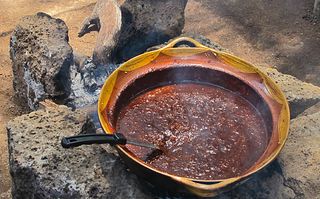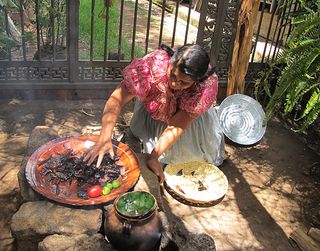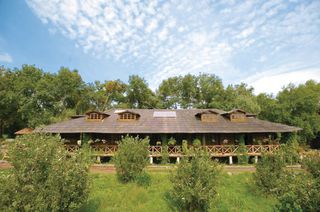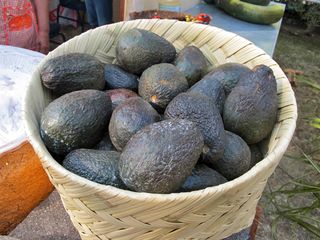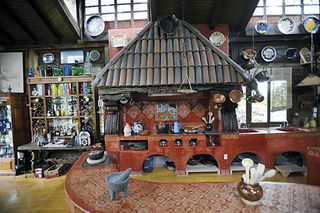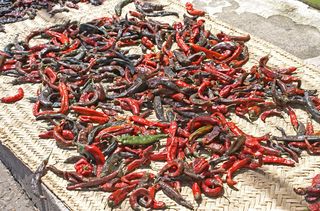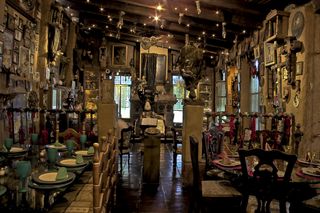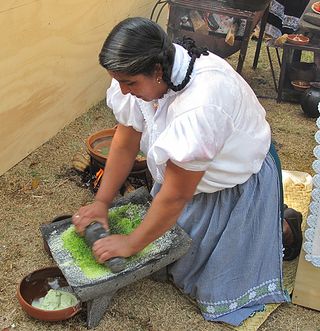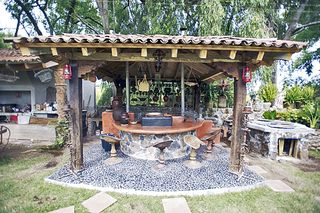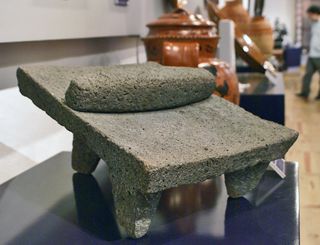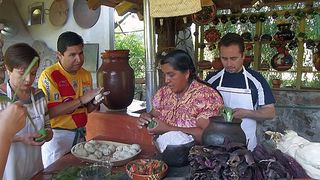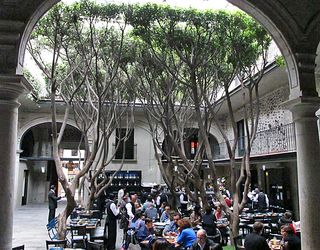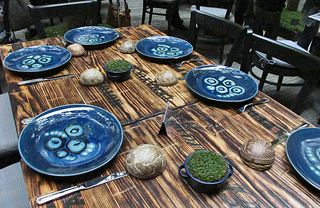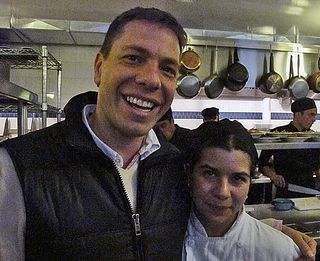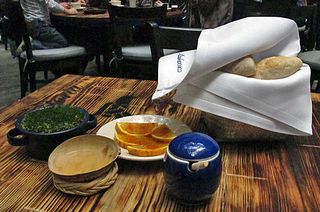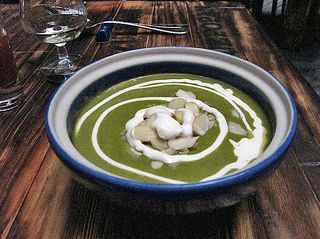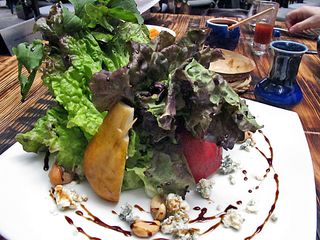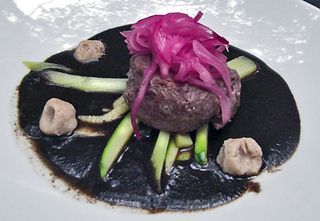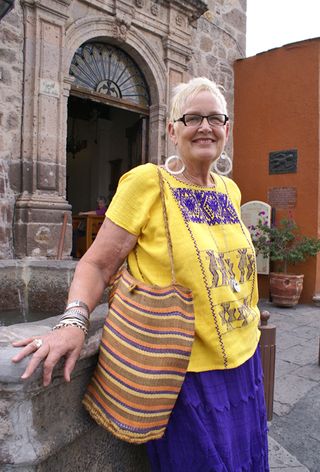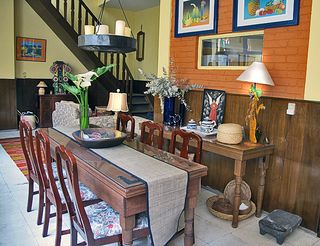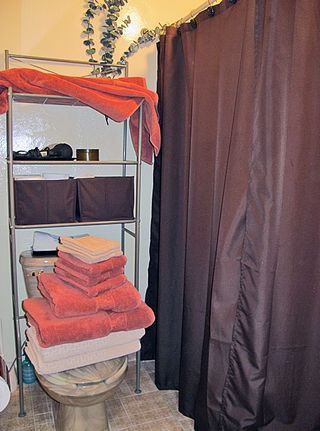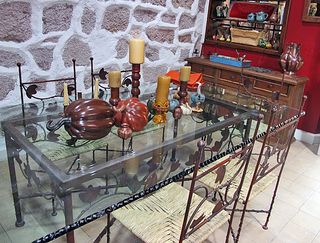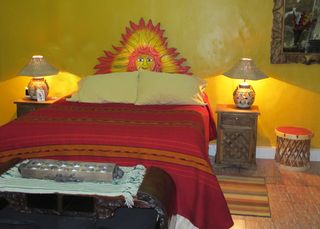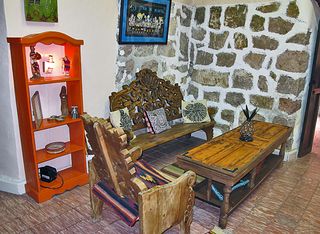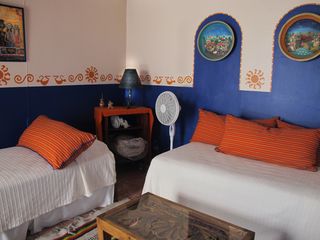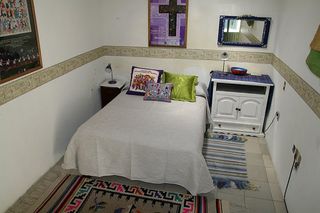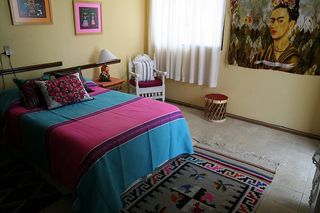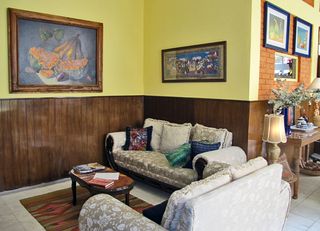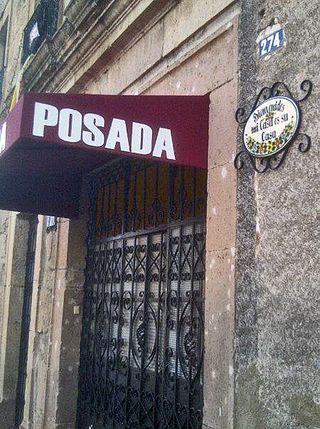
Ajijic, Jalisco is not your typical Mexican pueblito (small town). Although the town has existed for almost 500 years, early in the 20th century it began to be a destination for foreigners. Today, a good-size community of people from many places lives there. The majority are retired English-speakers from the USA and Canada, although some foreign residents come from as many as 60 different countries. Click on any photo to enlarge it for a better view. Photo courtesy Skyscrapercity.

Looking south on Calle Morelos in Ajijic. The arched ironwork sign reads Puerta del Lago, Corazón de Ajijic (Gateway to the Lake, Heart of Ajijic). Photo courtesy Panoramio.
Photographer Jesús Alejandre (and his friend el torito (the bull, danced by famed Michoacán mask maker Felipe Horta, right), with one of Jesús's large photos, on the town plaza in Ajijic, Jalisco. Photos by Mexico Cooks! unless otherwise noted.
In mid-2013, a group of Mexicans and foreigners devoted to Michoacán met in Morelia to create the Espíritu de Michoacán (Spirit of Michoacán) foundation. The mission of the foundation is the promotion and preservation of Michoacán's arts and artesanías (crafts). The impulse to form the foundation grew out of our deep concern over the lack of tourism–both national and international–in Michoacán, which has severely limited the sales of the state's fine artesanías. Because previously tourist-driven sales have fallen drastically during the last eight years, many artisans have been forced to cease or limit their production and have sought employment in other endeavors.
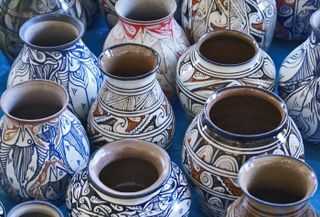
Floreros (vases) from Tzintzuntzan, Michoacán. The people of the state of Michoacán, especially those who live in the regions around Lake Pátzcuaro and the Meseta Purépecha, have been skilled artisans for hundreds of years. Current conditions in Michoacán have substantially reduced the ability of the artisan population to earn a living.
Shortly after the creation of the foundation, Mexico Cooks! contacted photographer Xill Fessenden of Ajijic, who organizes an annual festival of Michoacán artisans in her adopted town. These artisans journey to Ajijic for the exhibition and sale of their wares, and the Espíritu de Michoacán foundation wanted to be part of their celebration. Ten years ago, photographer Jesús Alejandre began his photo project, titled Espíritu de Michoacán, and hoped to take his large-format photo exhibition to Ajijic in conjunction with Ms Fessenden's 2013 festival.

The photographs are designed to be exhibited outside, as public art. At night, the photos' illumination makes the pictures glow as if they were lit from inside the scenes. Photo courtesy Espíritu de Michoacán.

The photographs have been exhibited in 20 cities and towns in the state of Michoacán. Just prior to the Ajijic exhibition, the city of Morelia invited photographer Alejandre to mount 22 of the enormous photographs in the Plaza de Armas (the principal plaza) in that city. The photos measure 2.5 meters by 2.10 meters and are designed to be exhibited in outdoor, public spaces. This photograph, taken in Pátzcuaro, Michoacán, in 2013, is the final photo in Jesus Alejandre's 10-year project. Photo courtesy Espíritu de Michoacán.
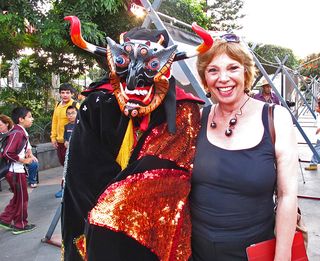
The excitement about this exhibit and sale was contagious. Mexico Cooks! snapped Marion de Koning, a visitor from San Diego, California, as she got close to el torito (the bull). Felipe Horta, mask maker from Tócuaro, carved and painted the mask he is wearing.
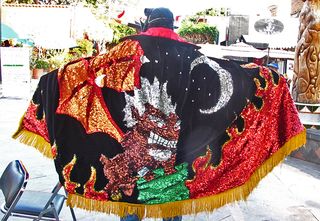
The torito spreads his cape before dancing. The typical Purépecha dance called El Torito (The Little Bull) is common throughout the Zona Lacustre (lake region) and the Meseta Purépecha (Purépecha tablelands).

Teofila Servín Barriga, an extraordinary Purépecha embroidery artist from Sanabria, Michoacán, dances El Torito for the opening ceremonies of the 2013 Festival de Pueblos Unidos in Ajijic.
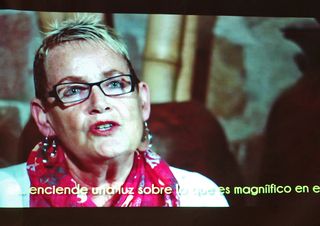
Rose Calderone of La Casona Rosa, Morelia, founder and guiding light behind El Espíritu de Michoacán, narrates a video about the photographs and the mission of the foundation; the festival showed the video, created by Andrea Gudiño Sosa, on the Ajijic plaza during the festival's opening night celebrations.

The exhibition and sale in Ajijic was an enormous success for the artisans and for the Espíritu de Michoacán Foundation. This festival offered a platform for the photos to be shown for the first time outside Michoacán; the exhibit travels next to Guadalajara, Jalisco, followed by a showing in León and San Miguel de Allende, Guanajuato and another in Mexico City. In the future, we hope to present Jesus Alejandre's paean to the artisans of Michoacán in various cities in the United States, Canada, and Europe. Photo courtesy Espíritu de Michoacán.
If you or someone you know would be interested in hosting this intensely beautiful photo exhibition, please contact Mexico Cooks! to begin making the arrangements. You are welcome to view more of the photographs at the website for Espíritu de Michoacan.
Looking for a tailored-to-your-interests specialized tour in Mexico? Click here: Tours.
